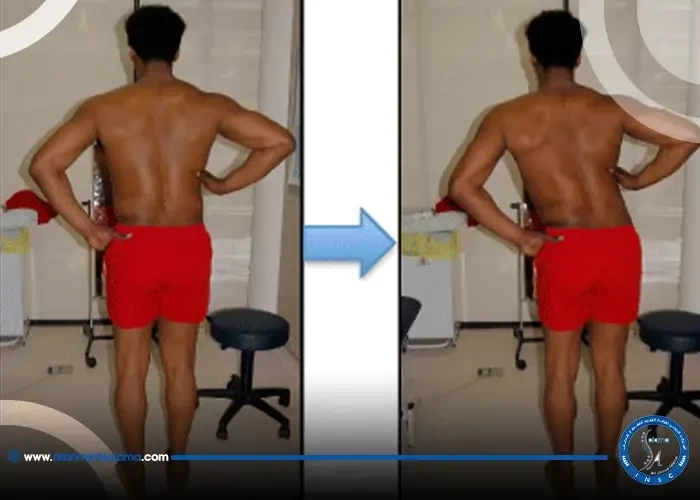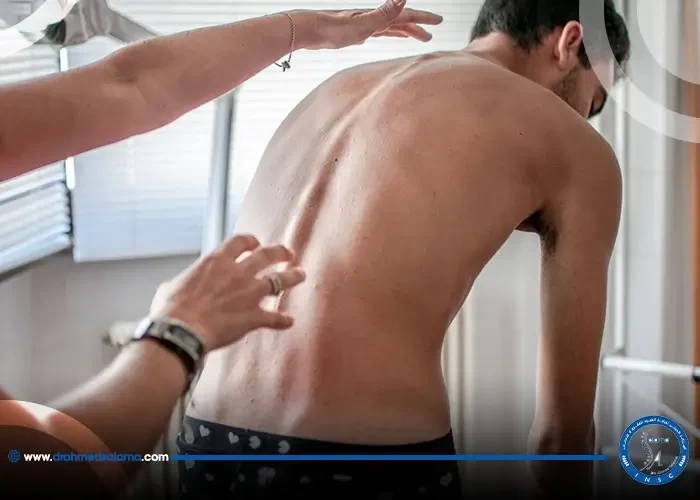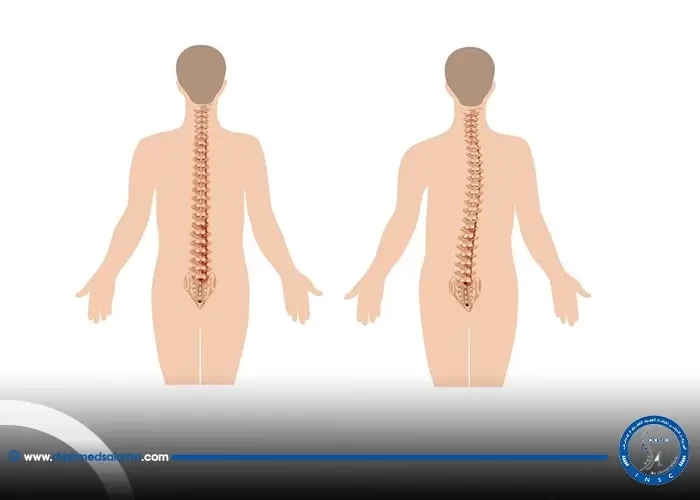Nasr City, 52 El Tayaran Street, in front of the Health Insurance Hospital

Symptoms of a stroke before it occurs: Early signs that should not be ignored

Early stroke symptoms provide an early warning that allows for rapid intervention before the condition develops into a full-blown stroke. Recognizing these early signs and understanding the risk factors helps prevent stroke, increases the chances of successful treatment, and improves quality of life. It is important for everyone to be aware of these symptoms and know how to protect themselves from a stroke by taking preventative steps and communicating with specialized doctors like Dr. Ahmed Ibrahim Salama to ensure optimal care and effective protection of brain health.
This article discusses the most prominent early stroke symptoms, their causes, complications, methods of diagnosis and treatment, prevention, and reasons for choosing the best doctors specialized in stroke treatment.
Pre-stroke symptoms
Pre-stroke symptoms provide an early warning that gives the patient the opportunity to intervene quickly before the condition develops into a full-blown stroke. It is important to recognize these signs so that swift action can be taken. The most prominent early stroke symptoms include:
Sudden weakness or numbness in the face, arm, or leg, especially on one side of the body.
Difficulty speaking or understanding speech, or speech disturbances.
Blurred vision or loss of vision in one or both eyes.
A sudden, severe headache with no apparent cause.
Sudden loss of balance or dizziness, and difficulty walking or coordination.
These are early signs of a stroke and should never be ignored, as early diagnosis and treatment can prevent serious complications and protect overall brain health.
It's worth noting that some of these symptoms may indicate a transient ischemic attack (TIA), or "ministroke," resulting from a temporary blockage of blood flow to the brain. A TIA usually doesn't cause permanent brain damage, but it's a strong indicator of the likelihood of a full-blown stroke in the future. About one in three people experience a full-blown stroke within the first year after a stroke.
What are strokes and when do they occur?
A stroke is a serious medical emergency that occurs when blood flow to part of the brain is reduced or interrupted, leading to damage or death of nerve cells in the affected area. Prompt intervention is crucial to reduce complications and protect brain health.
Types of Stroke:
Ischemic Stroke: This occurs as a result of a blockage in an artery due to blood clots or fatty deposits, and is the most common.
Hemorrhagic Stroke: This results from bleeding inside the brain due to weakened or ruptured blood vessels.
Common Causes of Stroke
Knowing the common causes of stroke helps you understand the symptoms of a stroke before it occurs and take preventive steps. The most prominent risk factors include:
High blood pressure: This increases pressure on the arteries and weakens them.
Heart disease: This can cause clots to form and travel to the brain.
High cholesterol and fats: This contributes to blocked arteries in the brain.
Diabetes: This affects blood vessels and increases the risk of blockage.
Smoking, obesity, and physical inactivity: These are lifestyle factors that affect cardiovascular health.
Transient Ischemic Attacks (TIAs): Brief episodes of temporary brain blockage increase the risk of a full-blown stroke.
These factors are directly linked to the onset of early stroke symptoms and symptoms of a mini-stroke, making early recognition and action essential to protect the brain.
Symptoms of a mini-stroke
The symptoms of a mini-stroke are limited or temporary, but they are an important indicator of a disruption in blood flow to the brain. The most common signs include:
Weakness or numbness in a limb, often on one side of the body.
Difficulty speaking or understanding, such as slow speech or difficulty choosing words.
Vision disturbances, such as blurred vision or loss of vision in one eye.
Dizziness and loss of balance, with difficulty walking or maintaining balance.
Sudden, severe headache with no clear cause.
Recognizing these symptoms promptly allows for early medical intervention before the condition develops into a full-blown stroke.
Causes of Stroke in Women
Women sometimes exhibit differences in their stroke pattern compared to men, and understanding these differences increases a woman's ability to prevent and act quickly. Key points include:
Hormonal factors: Increased risk of stroke during pregnancy, after childbirth, or when using hormonal contraceptives.
Chronic diseases: Women with high blood pressure or diabetes may have a higher risk of developing a stroke.
Transient ischemic attacks (TIAs): More common in older women, they are an early indicator of a possible full-blown stroke.
Lifestyle: Obesity, physical inactivity, and smoking increase the risk similarly to men, but their impact may be compounded in women due to hormonal factors.
Prevention and medical follow-up: Early detection and management of these factors reduces the risk of stroke and is an essential part of prevention for women.
Complications of stroke if not treated early
Complications of stroke are extremely serious, which highlights the importance of recognizing the symptoms of stroke before they occur and acting promptly. The most prominent complications include:
Partial or complete paralysis: loss of control of a limb or part of the body.
Speech and comprehension difficulties: impacting the ability to speak or understand language.
Vision and balance problems: blurred vision or loss of balance, increasing the risk of falling.
Cognitive and behavioral changes: difficulty concentrating, remembering, and making decisions, as well as mood swings or depression.
Other health complications: increased risk of infection or heart and lung problems due to decreased mobility.
Awareness of these complications underscores the importance of early recognition of stroke symptoms in women and men and prompt medical intervention. Dr. Ahmed Ibrahim Salama, a consultant neurosurgeon and spine surgeon, highlights the role of Dr. Ahmed Ibrahim Salama in providing specialized care that reduces complications and preserves patients' health and quality of life.
How to Diagnose a Stroke
Diagnosing a stroke is a fundamental step in determining appropriate treatment and preventing complications. It also highlights the importance of recognizing the symptoms of a stroke before they occur so that early intervention can be initiated. Diagnosis involves several steps:
Physical examination: The physician evaluates neurological functions, such as muscle strength, balance, vision, and speech.
Radiology and medical imaging: These include computed tomography (CT) and magnetic resonance imaging (MRI) scans to determine the type and location of the stroke.
Blood tests: To detect risk factors such as high cholesterol, diabetes, or clotting disorders.
Distinguishing between stroke and pseudostroke: Some cases mimic the symptoms of a stroke (TIA) but do not cause permanent brain damage. This distinction is known as the difference between stroke and pseudostroke.
Early diagnosis: Rapid diagnosis of a stroke directly impacts treatment outcomes and reduces potential complications.
Relying on these steps allows a physician, such as Dr. Ahmed Ibrahim Salama, to provide rapid and tailored surgical or therapeutic intervention for each case, protecting the brain and reducing the long-term effects of stroke.
Stroke Treatment Methods
Recognizing the symptoms of a stroke before it occurs is essential for receiving early treatment and reducing complications. Stroke treatment includes several options depending on the type and severity of the stroke:
Clot-dissolving medications: These are given within the first 4.5 hours of an ischemic stroke to dissolve the clot and rapidly improve blood flow to the brain.
Anticoagulant medications: These reduce the risk of new clots and improve circulation.
Surgical procedures: These include clot removal or stenting and arterial dilation, especially in severe cases.
Rehabilitation and rehabilitation: These include physical therapy, occupational therapy, and speech exercises to improve physical and cognitive abilities after a stroke.
Continuous medical follow-up: Regular assessments to prevent recurrence of a stroke and address risk factors.
With early diagnosis and treatment, patients can achieve significant improvements. This is where Dr. Ahmed Ibrahim Salama, a consultant neurosurgeon and spine surgeon, comes into play. He provides specialized care that increases the chances of recovery and answers the question many ask: "Do stroke patients recover?" Rapid, specialized interventions contribute to improved outcomes and protect brain health.
How to Prevent a Stroke
Preventing a stroke is essential to maintaining brain health and reducing the risk. Recognizing the symptoms of a stroke before it occurs is crucial to taking preventive measures. These measures include:
Controlling blood pressure, diabetes, and cholesterol, along with regular heart health monitoring to reduce the risk of stroke.
Following a healthy lifestyle that includes a balanced diet, exercise, and avoiding smoking and alcohol.
Maintaining a healthy weight to reduce the risk of stroke.
Managing heart conditions such as atrial fibrillation or heart muscle weakness, with regular checkups.
Awareness and early intervention when symptoms appear, which answers the question: How can I protect myself from a stroke?
Following these steps, along with regular consultations with specialists such as Dr. Ahmed Ibrahim Salama, a consultant neurosurgeon and spine surgeon, significantly reduces the risk of stroke and protects brain health.
Why is Dr. Ahmed Ibrahim Salama one of the best stroke doctors in Egypt?
Recognizing the symptoms of a stroke before it occurs is crucial for prevention and early intervention. Choosing the right doctor increases the chances of recovery and reduces complications. Dr. Ahmed Ibrahim Salama stands out as one of the best doctors in Egypt for treating strokes for several distinct reasons:
Extensive academic experience: He combines academic education with advanced scientific research in brain, nerve, and spine surgery.
Precise surgical skills: He is proficient in microscopic brain and peripheral nerve surgeries.
Using the latest treatment techniques: He relies on the latest surgical intervention methods and advanced specialized treatment.
Strict patient follow-up: He provides personalized care and continuous monitoring of each patient's condition to ensure the best results.
Continuing medical awareness: He publishes articles and delivers scientific lectures to enhance patient awareness about prevention and treatment.
A record of international honors and awards: He has received global recognition, reflecting the quality of his skills and professionalism.
Membership in major medical associations: This enhances his standing and supports him with the latest global medical developments.
A safe and reliable choice for patients: His experience and reputation make him a reliable choice for those seeking the best care in stroke treatment.
In conclusion, recognizing the symptoms of a stroke before they occur is a crucial step in protecting against serious complications and preserving brain health. By being aware of early warning signs, getting a prompt diagnosis, following preventive measures, and consulting specialists like Dr. Ahmed Ibrahim Salama, the risks can be significantly reduced and stroke treatment outcomes achieved, increasing the chances of recovery and restoring quality of life.
Early awareness and prompt action are key to stroke prevention. Following medical advice ensures brain protection and reduces the likelihood of permanent complications. Don't wait for symptoms to appear; book your consultation now with Dr. Ahmed Ibrahim Salama to assess your condition and prevent any potential stroke risk.
How long do stroke symptoms last before they occur?
Early stroke symptoms typically appear for a short period, ranging from minutes to hours, and may temporarily disappear before developing into a full-blown stroke, making prompt recognition crucial for prevention and early treatment
What is the difference between the symptoms of a false-stroke and the symptoms of a real stroke?
A pseudo-stroke (TIA) shows signs similar to a real stroke but does not cause permanent brain damage, while a real stroke may lead to the death of nerve cells and requires urgent medical intervention to minimize complications






